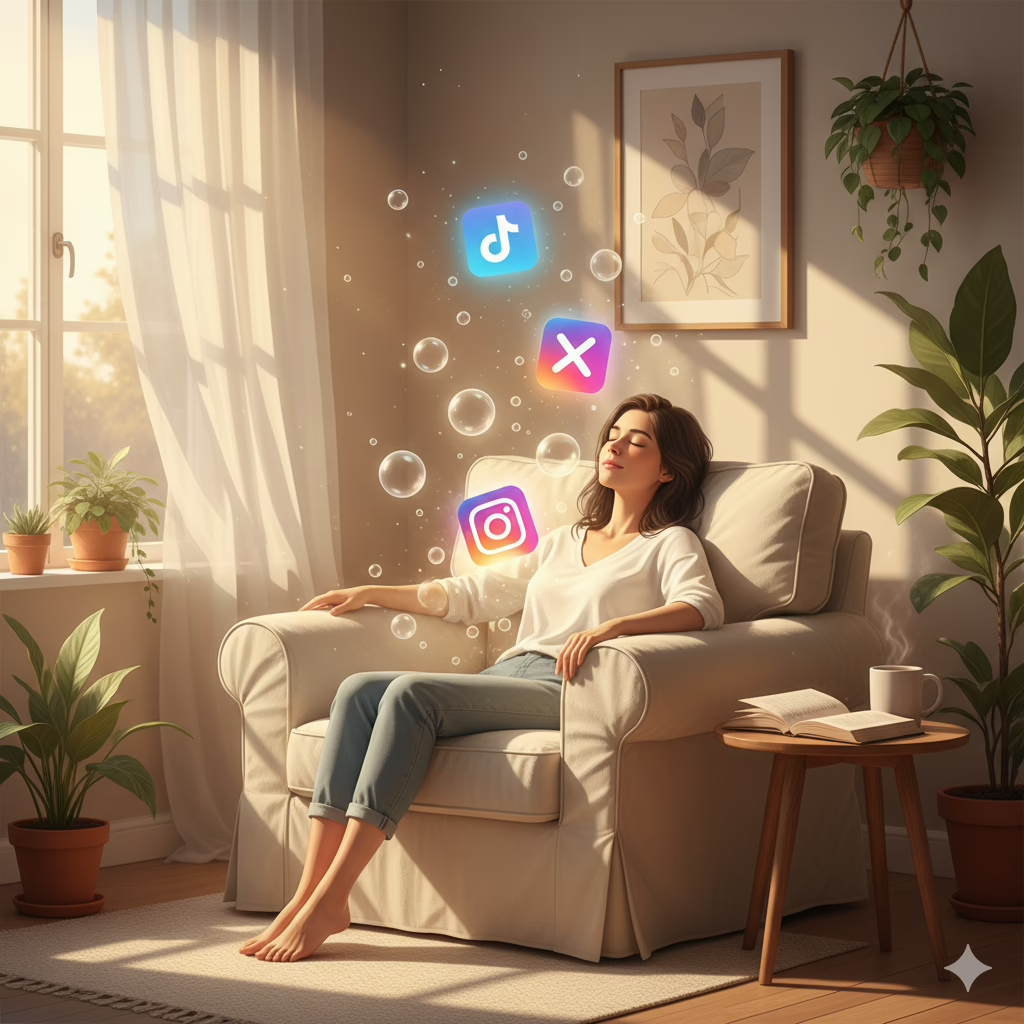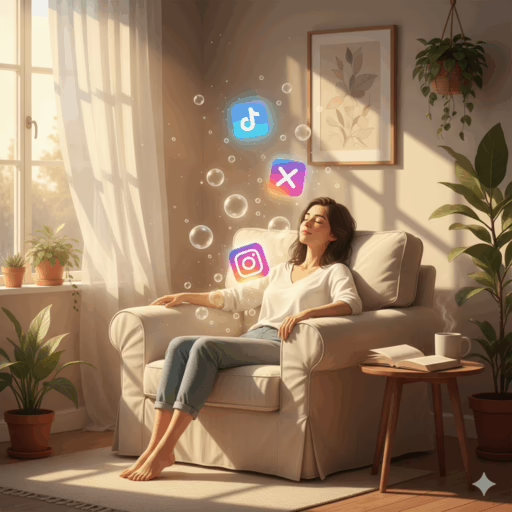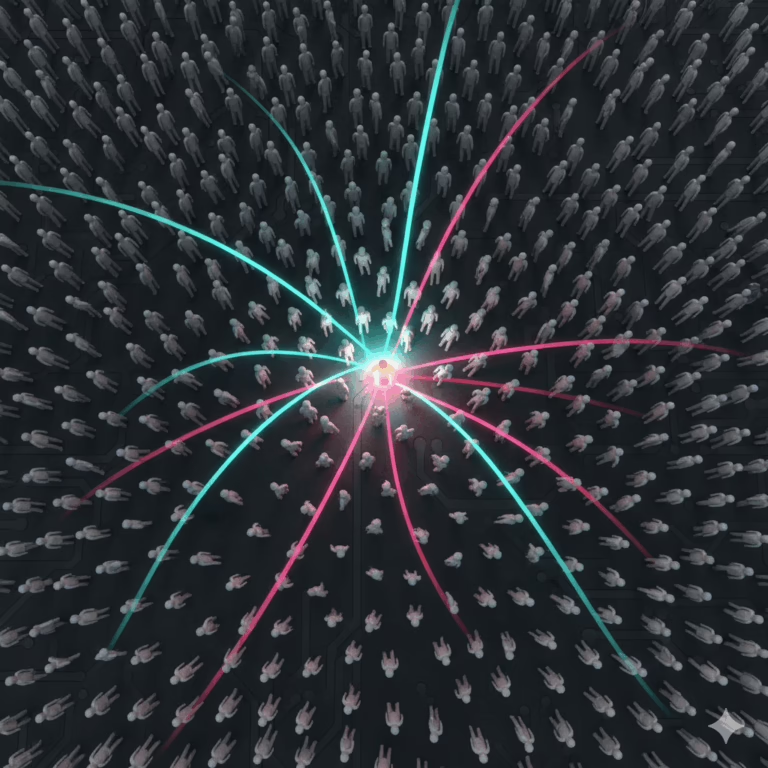Your eyes are dry. Your brain feels like it’s running on 3G in a 5G world. You’re scrolling, but you’re not really seeing anything.
The worst part? You’re “working.”
Sound familiar?
You’re a creator, a digital entrepreneur, a CEO. Being “online” isn’t just a distraction; it’s your office, your storefront, your stage, and your community hub all rolled into one. The pressure to create, post, engage, reply, and then check the analytics is a 24/7 cycle.
Let’s be perfectly clear: That feeling of being completely “done,” of staring at your screen with zero new ideas, isn’t a personal failure. It’s a professional hazard. It’s creator burnout, and it’s the price of admission for a job that never clocks out.
The internet is flooded with “digital detox guides” telling you to “just unplug,” “delete your apps,” or “go camping for a week.”
That advice is useless for you.
You can’t “just unplug.” Your livelihood depends on that connection. When your job is the screen, the standard advice fails because it doesn’t understand the problem.
So, what does this mean for us?
It means we need to stop treating digital wellness like a luxury and start treating it like a core business strategy. This isn’t just another digital detox guide that tells you to “go camping.” This is a strategic manual for professionals who can’t just “unplug” but who need to reclaim their mental clarity to survive and thrive. This is how you protect your most valuable asset: your mind.
Section 1: The Diagnosis (Why You’re Here)
You’re not weak; your environment is engineered to make you fail. Before we can talk solutions, we have to respect the enemy.
The Real Enemy: “Dopamine Fasting” and the Hook Model
You’re not addicted to your phone. You’re addicted to a system.
The term “dopamine fasting” is floating around, and while it’s a bit of a misnomer (you can’t “fast” from a neurotransmitter), it correctly identifies the problem. Your brain’s reward system, which runs on dopamine, has been hijacked.
Platforms are designed by Ph.D.s in behavioral psychology to be “slot machines.” Every notification, every like, every unpredictable reward gives you a tiny “hit.” This trains your brain to crave shallow, reactive engagement.
Why does this matter? Because this constant, low-level stimulation makes real, deep, focused work—like writing a script, editing a video, or building a strategy—feel “boring” and impossibly difficult. Your brain’s baseline for “rewarding” has been artificially raised.
It’s Not “FOMO,” It’s a Business Model
That constant, nagging anxiety that if you disconnect, you’ll miss a comment, a trend, or an opportunity? That’s FOMO (Fear of Missing Out).
But FOMO isn’t just a feeling; it’s a marketing tactic. It’s the engine that powers the attention economy. It keeps you in a reactive state, scrolling endlessly, convinced that “missing out” is a professional disaster. This is the root of creator burnout.
Section 2: The Emergency Protocol (The 48-Hour Reset)
Okay, you’re on the edge of burnout. You need an immediate reset. This is where a short, strategic detox comes in. This isn’t a cure, but it’s a powerful circuit breaker.
PAA Answer: What Is a 48-Hour Social Media Detox?
This is the most common PAA (People Also Ask) question, and for good reason. A 48-hour social media detox is a practical, achievable plan, usually running from Friday evening to Sunday evening.
It’s not about running to a cabin. It’s about intentionally breaking the stimulus-response cycle for two full days to let your brain’s reward system reset.
How to Properly Do a 48-Hour Digital Detox (For Creators)
This isn’t for hobbyists. This is for professionals.
Phase 1: Pre-Detox (Friday, 4 PM – 6 PM)
- Communicate: Don’t just disappear. Post a simple “Offline for the weekend” graphic or story. Let your audience know you’re practicing what you preach.
- Automate: Set up auto-responders on your email and DMs. “Thanks for your message! I’m offline recharging and will get back to you Monday.”
- Delegate: If you have a team, set the “emergency-only” contact protocol (e.g., “Only text me if the website is literally on fire”).
- Log Out: Actively log out of all social and email apps on your phone. This is crucial. It adds a layer of “friction” so you can’t just open them out of muscle memory.
Phase 2: The Shutdown (Friday 6 PM – Sunday 6 PM)
- The Phone: Put it on “Do Not Disturb” and place it in a drawer in another room. Your phone is now a “dumb” tool, only for emergencies or making calls.
- The Rules: No social media. No work email. No news sites. No aimless browsing.
- The Exception: It’s okay to use your computer for a specific, pre-planned, offline creative task (e.g., writing in a non-internet-connected app like Ulysses or Scrivener) or watching a movie you downloaded beforehand. The goal is to eliminate reactive and infinite-scroll media.
Phase 3: The Re-Entry (Sunday 6 PM)
- Don’t Binge: The biggest mistake. Don’t open the floodgates.
- Batch Your Return: Log in to one platform. Check essentials. Close it. Go to the next. Do not just sit and scroll for two hours to “catch up.”
- Acknowledge the Feeling: You will feel a rush of anxiety. This is the addiction’s “withdrawal” kicking in. Recognize it. Breathe. It will pass.
PAA Answer: How Long Should You Digital Detox For?
For a reset, 48-72 hours is the sweet spot. It’s long enough to break the immediate cycle and reset your dopamine baseline but not so long that it feels impossible or creates massive work anxiety. A full 7-day detox is great, but let’s be realistic—the 48-hour social media detox is the tool you’ll actually use.
Section 3: “What Do I Do Instead?”
This is the next big PAA: “What to do on a digital detox instead of being on your phone?”
This is where most guides fail. They say “go for a walk.” You’ll do that for an hour. What about the other 47? This is the void that triggers anxiety.
You don’t fill the void with “nothing.” You fill it with “analog.”
- Embrace Strategic Boredom: Do nothing. Sit on your couch and stare at the wall. This isn’t a joke. Your brain, denied its usual easy hit of information, will finally reboot its “Default Mode Network.” This is where your best, most original ideas are hiding.
- Analog Creation: Buy a physical notebook and a good pen. Mind-map your next project. Journal. Write down your goals. Plan your next week on paper.
- Deep Consumption (Monotasking): Read a physical book (not a Kindle with Wi-Fi). Put on an entire album and just listen (don’t create a playlist). Watch a classic movie from start to finish without a second screen in your hand.
- Rebuild Your Inner World: The constant external validation of social media can erode your internal foundation. Use this quiet time to reconnect with yourself. This process of rebuilding your internal world is crucial. (It’s the entire foundation of building The Unshakable Core: A Guide to Bulletproof Self-Esteem, which, unsurprisingly, often gets eroded by online comparison.)
Section 4: Why Your Detox Will Fail (And What to Do Instead)
Here’s the hard truth, and a direct answer to the PAA “Do digital detoxes actually work?”:
Yes, as a temporary reset. But they fail as a long-term strategy.
A “detox” implies that the substance (tech) is the poison and that abstinence is the cure. This is wrong. Tech is a tool. The problem is your relationship with the tool. You’re a creator; you can’t be abstinent.
You don’t need a “detox.” You need a “philosophy.”
The Philosophy: Meet Cal Newport’s “Digital Minimalism”
This is the “1000-0” move. This is your permanent strategy.
Cal Newport, a computer scientist, introduced this concept in his book. This is the “entity” Google loves to see connected to this topic.
Digital Minimalism is not about “less tech.” It’s about intentional tech.
Newport defines it as: “A philosophy of technology use in which you focus your online time on a small number of selected and optimized activities that strongly support things that you value, and then happily miss out on everything else.”
- Detox says: “Tech is bad! Run away for 48 hours!”
- Minimalism says: “Is this specific app the best way to support my value or business goal? If not, I’m not using it. If yes, I will use it only for that purpose and only during a scheduled time.”
The Strategy: How to “Digitally Declutter” Your Creator Business
So, how to do a digital detox that lasts? You don’t. You perform a “Digital Declutter.”
- The 30-Day Pause: Remove every “optional” app from your phone. Not your work email, but definitely Twitter, Instagram, TikTok, etc. For 30 days.
- The Re-Evaluation: After 30 days, ask these ruthless questions for each app you consider bringing back:
- “Does this app directly and significantly improve my life or business?”
- “Is it the best way to get that benefit?” (e.g., “Does scrolling Twitter really build my business, or does writing and scheduling one high-value post do it?”)
- “How can I use it intentionally?” (e.g., “I will only use Instagram on my desktop, from 9 AM – 10 AM, to post and respond to DMs. Then I log out.”)
- Create SOPs (Standard Operating Procedures): This is the CEO move. Batch your tasks. Have a “DM block,” an “email block,” and a “creation block.” This isn’t just a mental trick; it’s a structural change to your business. (We built The Digital Entrepreneur’s Time Mastery Kit around this very principle of strategic, systemic focus.)
Section 5: Your New Mandate: Embracing JOMO
This entire system shifts you from FOMO (Fear of Missing Out) to JOMO (Joy of Missing Out).
JOMO is the peace of mind that comes from knowing you are not being pulled in a thousand directions by algorithms. It’s the confidence that comes from missing the 99 shallow trends so you can create the one deep, valuable piece of work that matters.
This isn’t an escape. It’s an investment.
The ultimate digital detox benefit isn’t “feeling relaxed.” It’s mental clarity. It’s focus and productivity. It’s the ability to do the deep, valuable work that only you can do.
This is no longer just creator wellness; it’s your new competitive advantage.






